Review: A Perfect Breakaway in Robin Hood's Bay
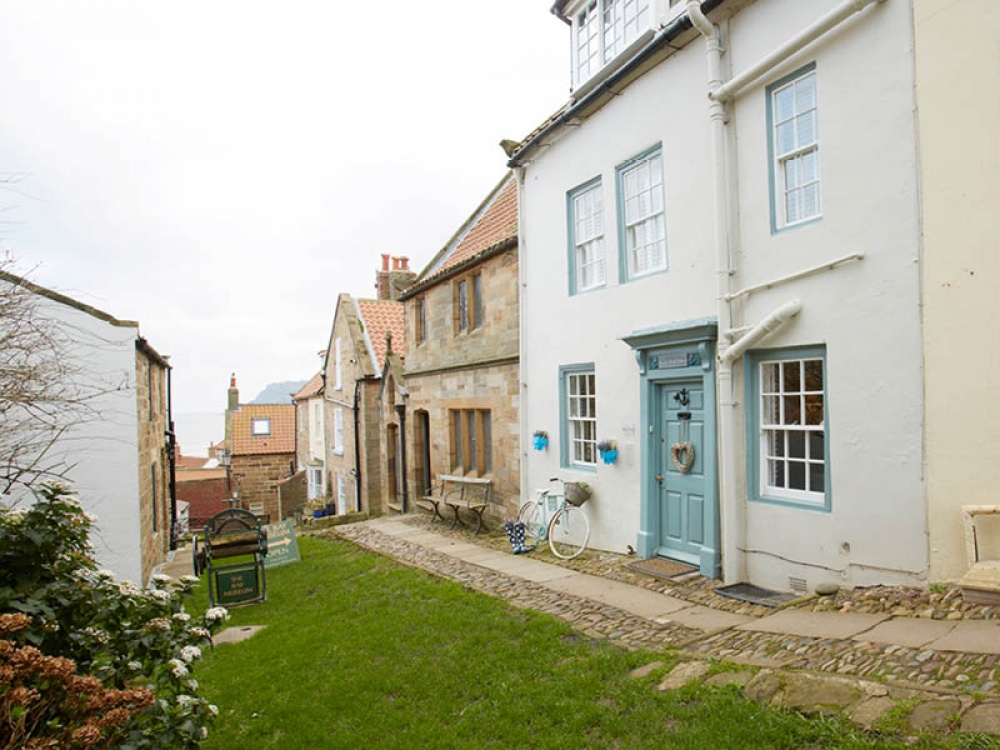
Living North spent a few days at spectacular Robin Hood's Bay
Such is the unreliability of our glorious, or not-so-glorious, English weather we headed to the Yorkshire coast with a touch of trepidation, but we needn’t have worried… as we journeyed over the North York Moors, the heather, already donning its amazing annual coat of purple under a deep blue sky, made the approaching views truly awe-inspiring, and descending into the bay, we could see the busy beach below, full of dog walkers enjoying the rare summer sunshine.
The Yorkshire coast has many bays, coves and beaches but a favourite is definitely the characterful Robin Hood’s Bay, tucked between the perhaps better known and definitely busier towns of Whitby and Scarborough, where gaggles of houses and cottages, many with distinctive pantile red roofs glowing in the sunshine, tumble down the steep-sided cliff to the sea.
Parking is a bit of an issue (most of the tiny lanes and snickets that make up the village are not accessible by car), but day trippers park at the top of the hill and stroll down to the steep bank into the village. Resident’s permits mean anyone staying can drive down into the Bay to find their allocated space.
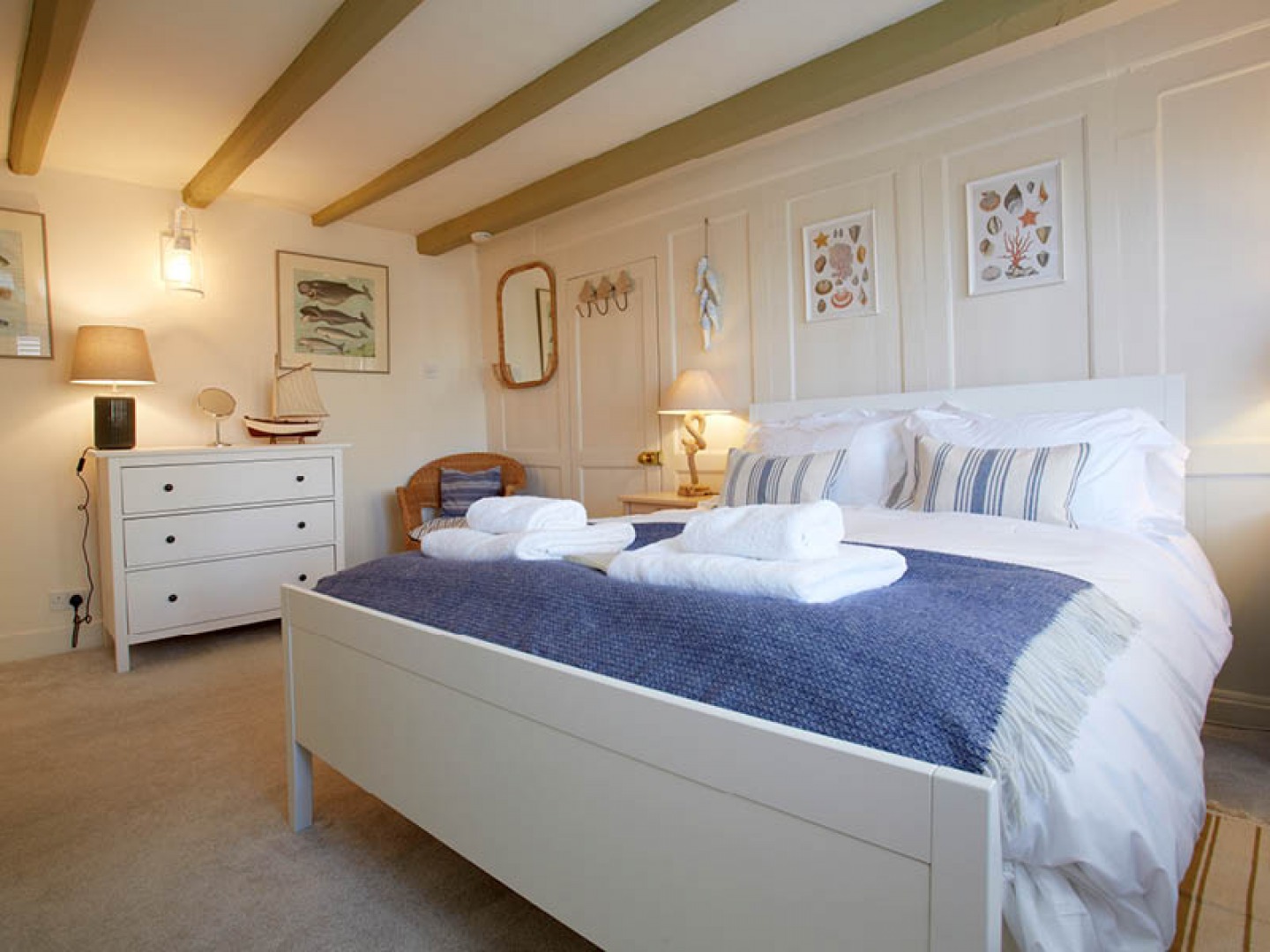
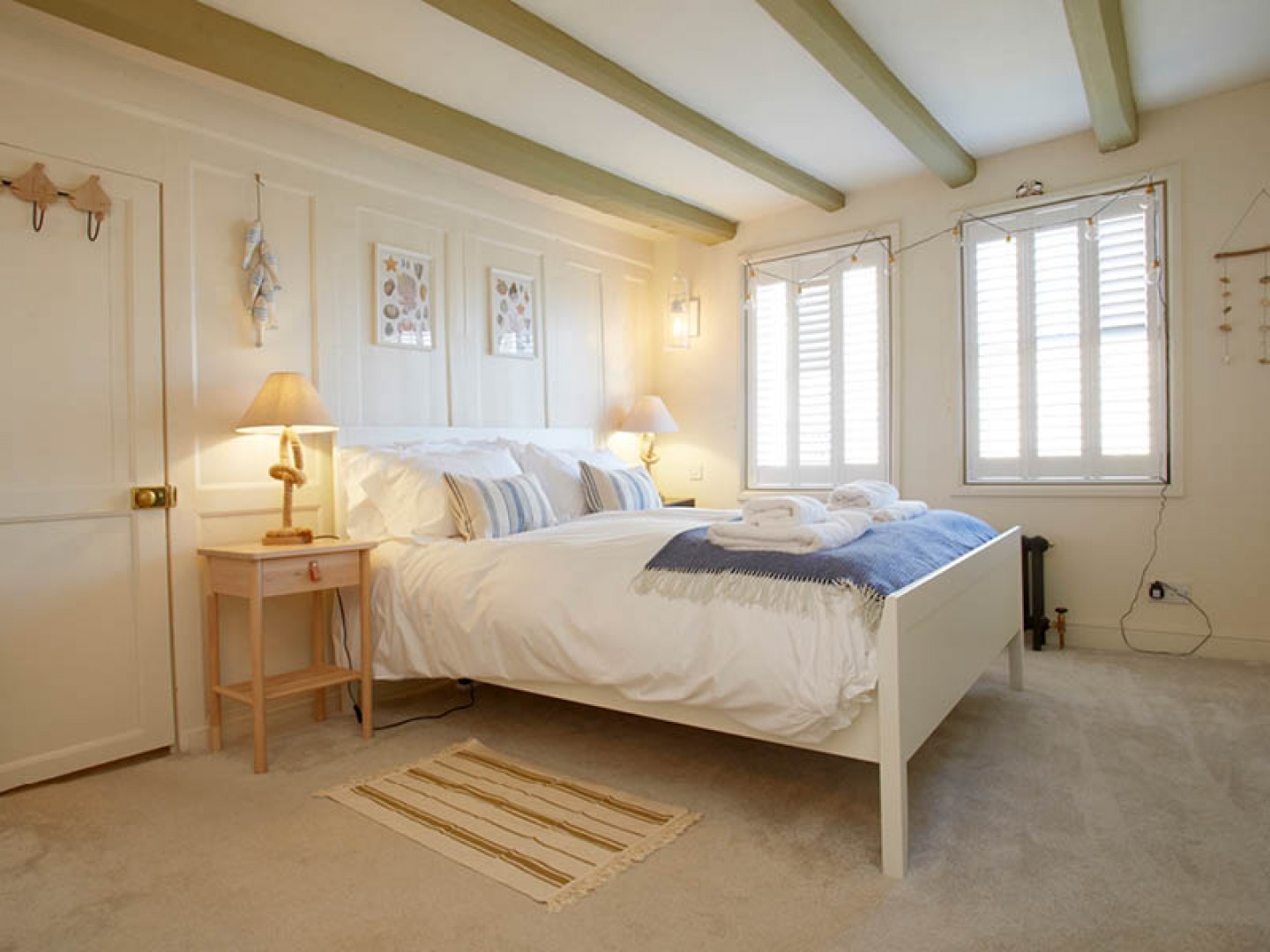
Our cottage, the Grade II-listed Green Bank House, has designated parking in Fisherhead car park towards the centre of the village. And with clear instructions on where to park (and where not to) we were soon outside the door of the cottage on its ancient cobbled lane, with the Robin Hood’s Bay Museum on one side and a line of similarly pretty white-washed cottages on the other.
The former fisherman’s cottage and artist’s residence dates back to 1706, with an open plan sitting and dining area with log-burning stove (you can easily imagine how cosy this would be in cold weather) and a kitchen tucked onto the back. A small staircase leads from the kitchen to a small outside yard with a table and chairs for al fresco dining if the weather is fair.
Steep carpeted stairs lead up to the two floors above and the history of the house is immediately obvious from the many thoughtful details all providing a nod to its seaside location. There is a double room, a twin room (suitable for children) and a bathroom on the first floor. On the top floor the ensuite master bedroom, which boasts a double boat bed built into the eaves, has stunning views across the red roofs to the sea and is definitely a real show-stopper.
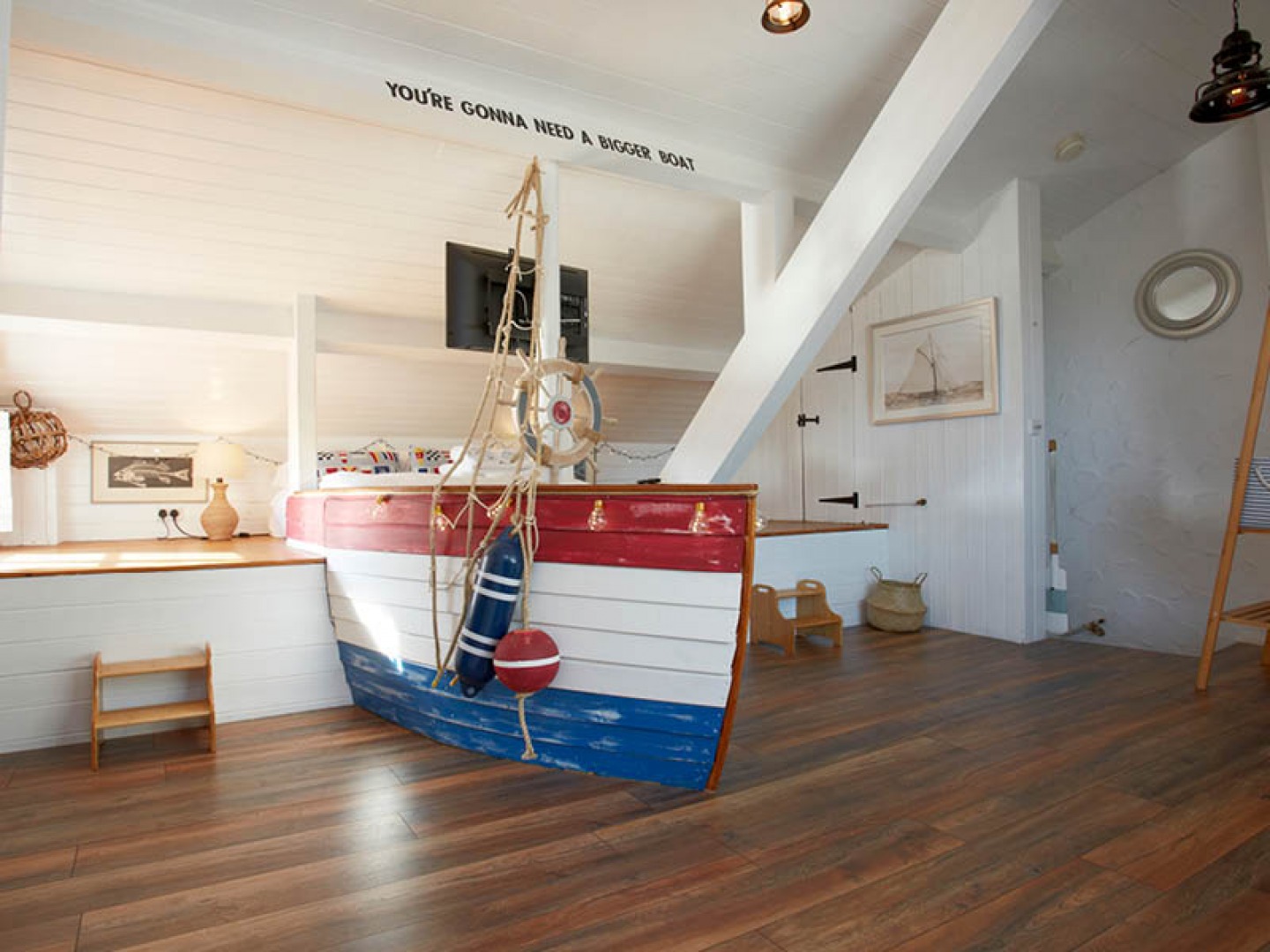
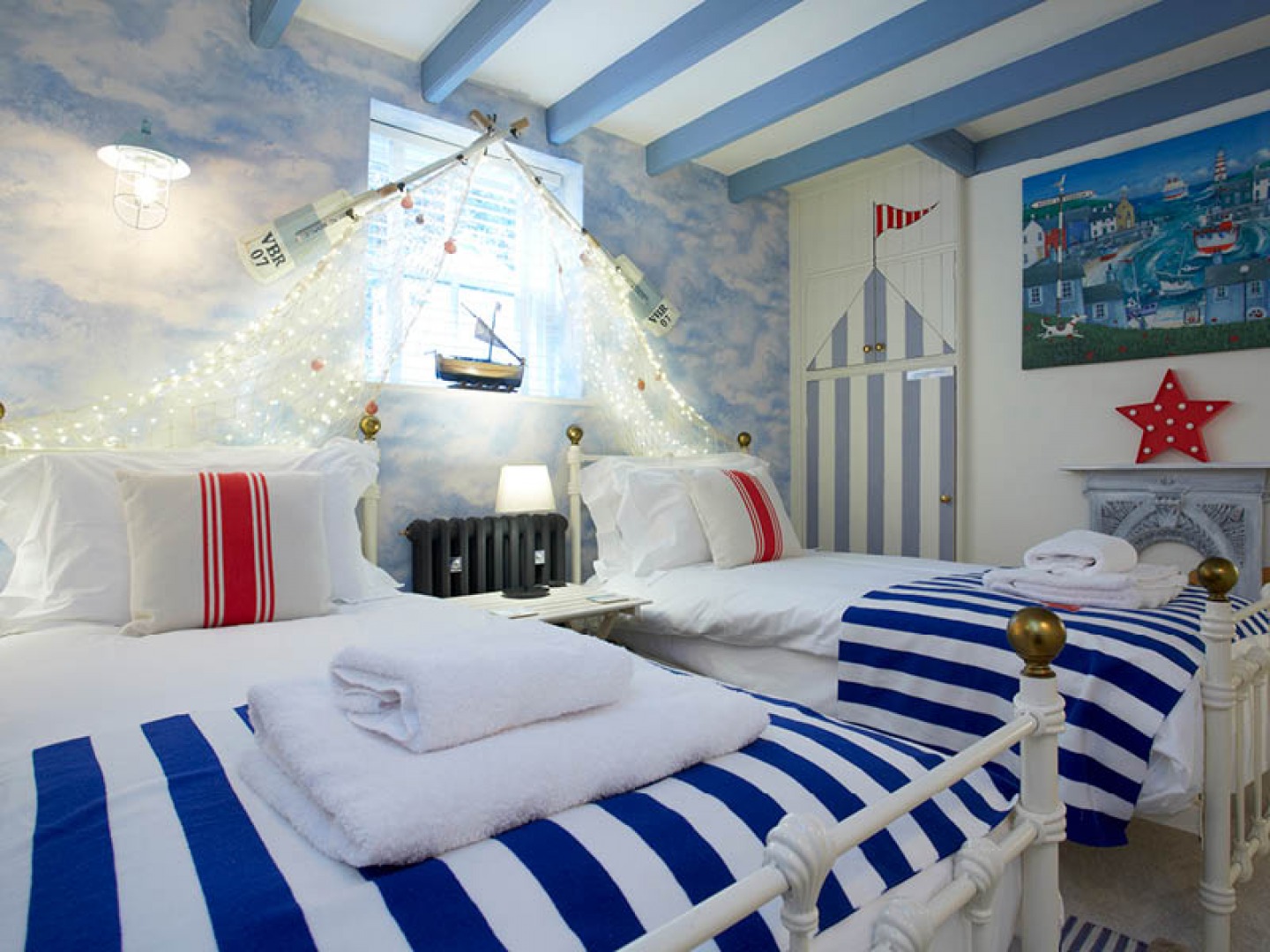
Our plan, once settled, was to get out and about and explore as much as possible and, winding our way down tiny cobbled lanes, within a few minutes we were on the ancient slipway where the sea at high tide cuts off the main stretch of beach as it licks up to the ancient walls. There was a slither of sand a little further down but we decided to wait for low tide to explore it more easily.
The Bay (as it’s referred to here) has a number of cosy-looking bars, cafés and small independent shops, and despite it being mid-week and out of the main holidays it was busy. Wanting to stretch our legs a little we headed back up the steep bank we’d just driven down to the Hotel Victoria at the very top, which enjoys impressive views from its large garden south towards Ravenscar in the distance. Returning down the bank, which is a lot easier than climbing it, we’d reserved a table at Brambles Bistro right down in the Bay so it was there we headed, a little early, but despite being very busy they managed to squeeze us in. The food was unexpectedly brilliant, and it seems many visitors agree as it remained busy throughout our stay. Definitely one to try for breakfast, lunch or dinner, it’s worth booking just to be sure of getting a table.

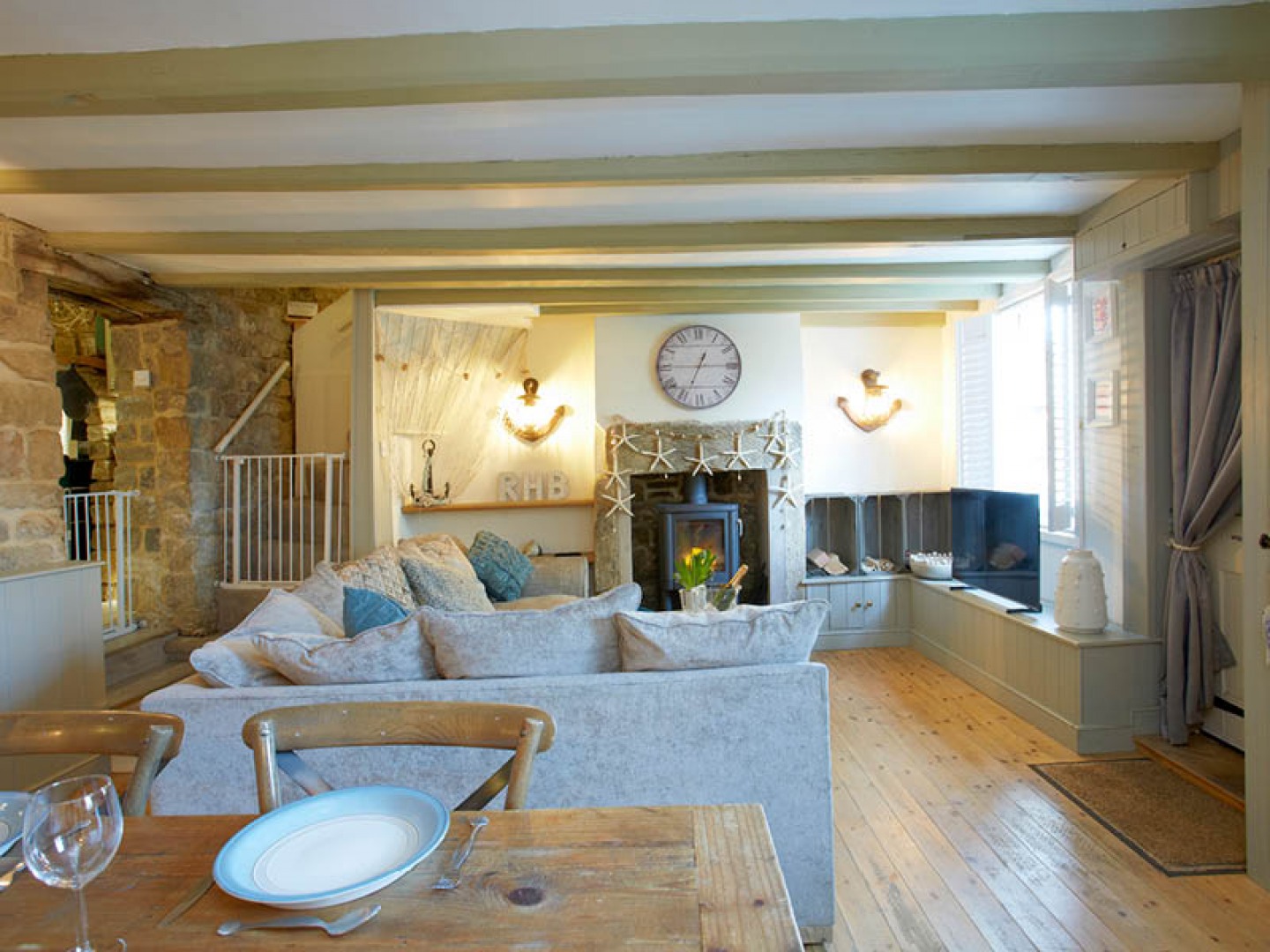
Back at Green Bank House we set sail for bed, ready to explore more with a full day on the coast to look forward to, and in the morning we went to inspect the beach at low tide, stopping to peer into the many rock pools and always on the lookout for the fossils which can be found here, before exploring the ancient alleyways and lanes of the Bay. There’s something really fascinating about the maze of cottages which cling to the steeply-sided cliff and it’s not hard to imaging the fishermen heading out from the tiny port in all weathers, and the smugglers, for which Robin Hood’s Bay is renowned, smuggling precious tea and silks through the many secret passageways and snickets without ever being seen.
That evening we had dinner at the aptly-named Smugglers Ale House and enjoyed listening to the locals catch up at the bar as we sat and watched the world go by from our cosy window seat.
As we packed the car the following morning and headed back up the bank we stopped at the top of the hill for a last glimpse of the sea and vowed to return soon. Robin Hood’s Bay is a rare gem and Green Bank House a special place to enjoy this spectacular part of the world.
sandandthecity.co.uk







